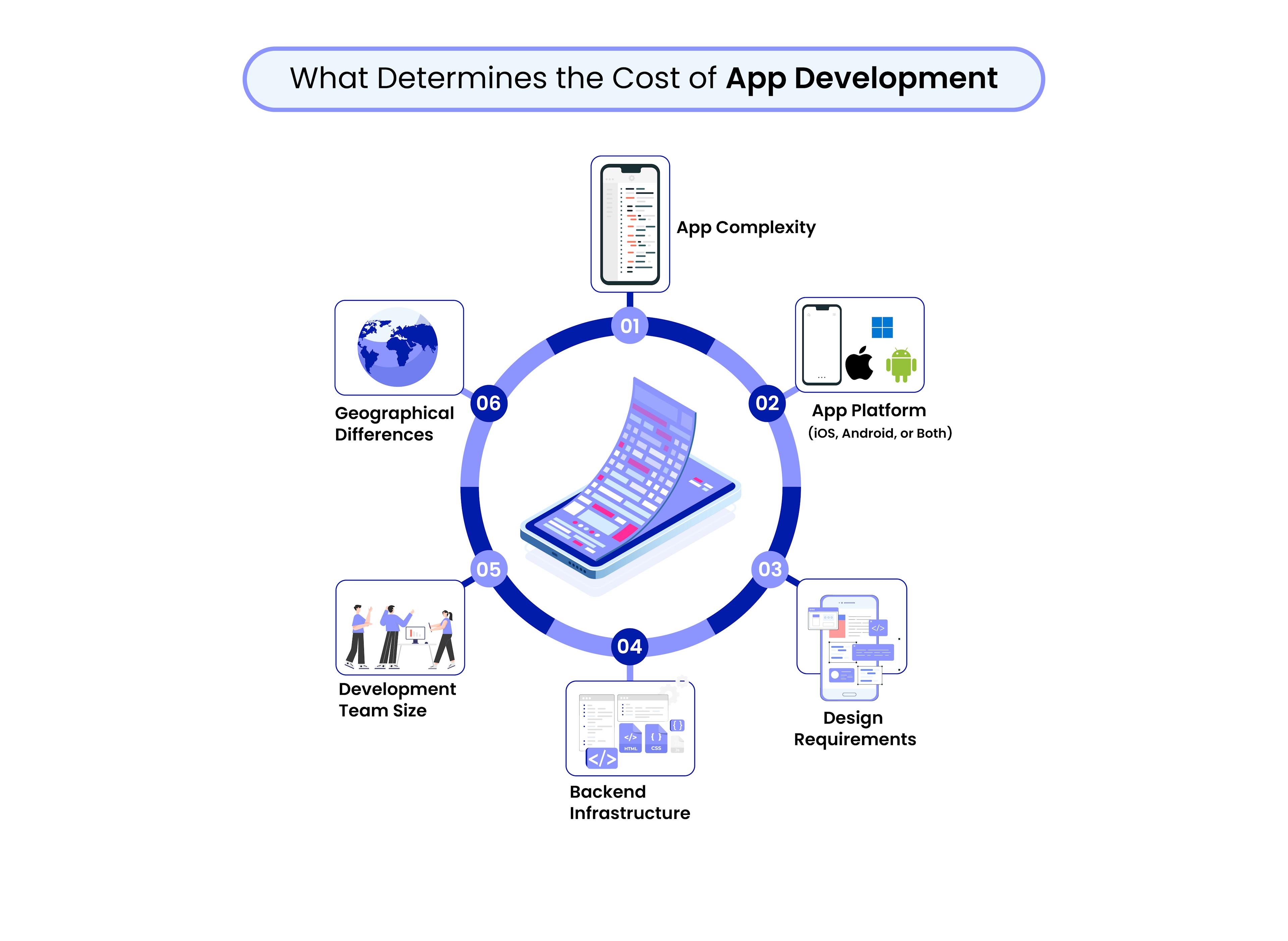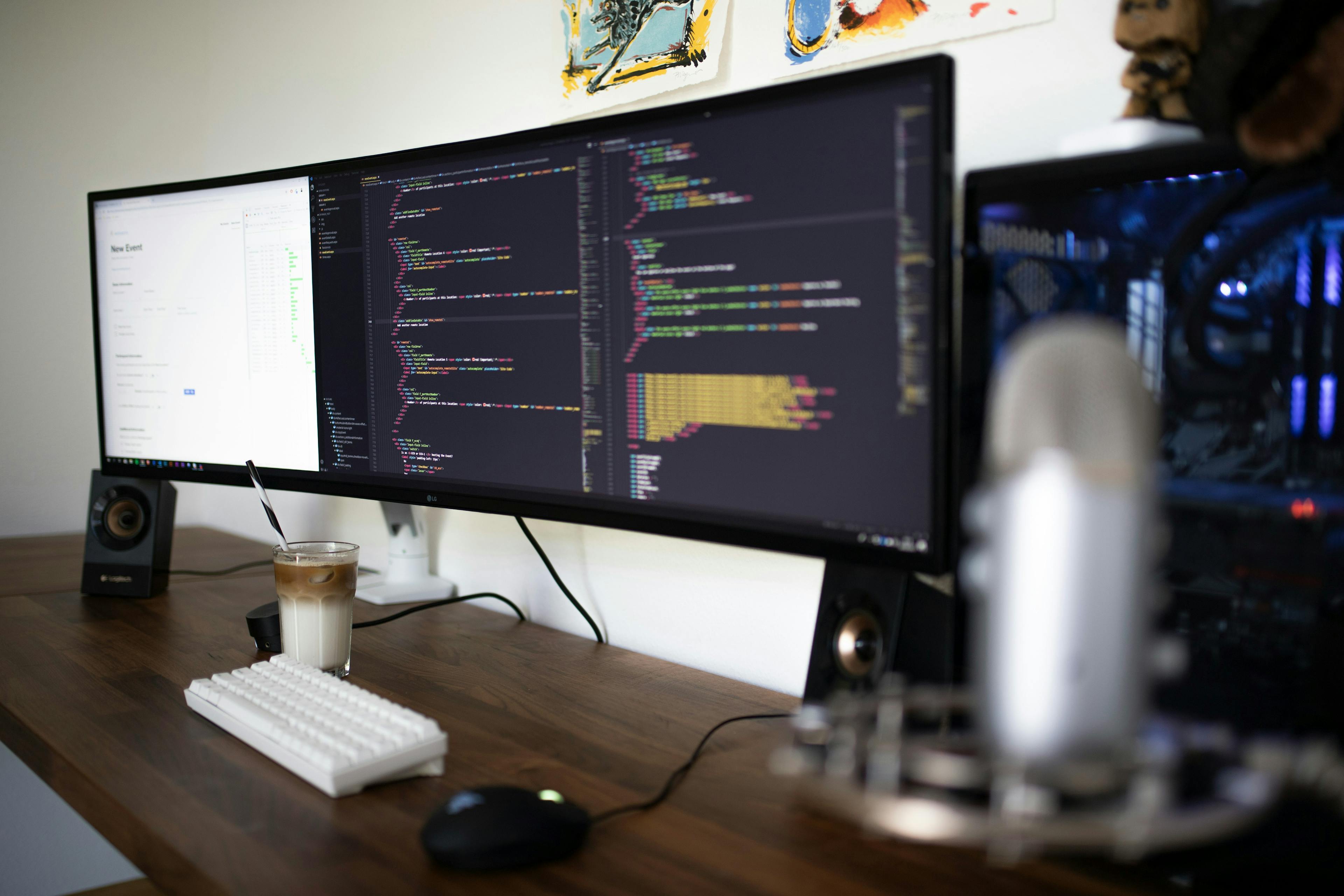What Determines the Cost of App Development? A Detailed Breakdown

Developing a mobile app is an exciting opportunity for businesses to engage with their customers, streamline operations, or introduce innovative new services. However, one of the most common questions that arises during the planning stage is, "How much will it cost?” The reality is that the cost of app development can vary widely, depending on several key factors. From the complexity of the app to the platform and the size of the development team, there are numerous elements that influence the final price.
In this blog, we’ll provide a detailed breakdown of the factors that affect app development costs, highlight average pricing based on app type, explore how platform choices impact costs, and discuss the importance of maintenance and updates in the overall budget.

Overview of Factors Affecting App Development Costs
When it comes to app development, multiple variables influence the total cost. Understanding these factors can help businesses plan their budgets more effectively and avoid unexpected expenses. Below are some of the most critical elements that determine the cost of developing an app.
1. App Complexity
The complexity of the app is one of the most significant factors that influences cost. A simple app with basic features will naturally cost less to develop than a complex app with advanced functionalities.
Types of Complexity:
Basic Apps: These apps offer core features such as simple interfaces, limited user interactions, and no backend infrastructure. Examples include to-do lists or simple calculators.
Moderate Complexity Apps: These include additional features like user authentication, payment gateways, and integration with external APIs. Examples are e-commerce apps, fitness trackers, or news apps.
Complex Apps: Apps with advanced features such as real-time data processing, video streaming, artificial intelligence (AI), or augmented reality (AR) tend to be much more expensive. These apps require a sophisticated backend, extensive databases, and advanced security measures. Examples include social media platforms, video conferencing tools, and marketplace apps.
2. App Platform (iOS, Android, or Both)
The platform(s) for which you’re developing the app can also impact the cost. While many businesses want their app to be available on both iOS and Android, developing for both platforms simultaneously (native development) means that you essentially need to build two separate apps, which increases development costs.

Platform-Specific Considerations:
iOS Development: iOS apps are built using Swift or Objective-C. Development for iOS tends to be slightly more expensive due to the higher design standards required by Apple’s App Store. However, there are fewer device variations to account for, which can simplify development.
Android Development: Android apps are built using Kotlin or Java, and there are more devices and screen sizes to account for, which can make development more time-consuming and costly. However, Android has a larger global user base, making it essential for businesses targeting a wide audience.
Cross-Platform Development: Tools like React Native and Flutter allow developers to create apps that run on both iOS and Android using a single codebase. This can significantly reduce costs and development time, but there may be trade-offs in terms of performance and access to native features.
3. Design Requirements
App design plays a crucial role in determining costs. The more intricate the user interface (UI) and user experience (UX) design, the higher the development costs. Apps that require custom animations, advanced graphics, or unique navigation structures will take longer to design and develop.
Design Factors Affecting Cost:
- Custom UI/UX Design: Custom-designed apps tailored to your brand and user base will be more expensive than using standard design templates or components.
- Responsive Design: Ensuring that the app works seamlessly across different devices (e.g., smartphones, tablets) requires additional time and effort from the design and development teams.
- Prototyping and Testing: Developing wireframes, prototypes, and testing the design on multiple devices can also add to the overall cost.
4. Backend Infrastructure
The backend infrastructure is the foundation that supports the app’s functionality, especially for apps that require user authentication, data storage, real-time updates, or integration with external services.
Backend Features That Influence Cost:
Data Storage: Apps that store large amounts of user data (e.g., social media or e-commerce apps) will require robust backend solutions, which adds to the cost.
Server Management: Depending on the app’s needs, businesses may have to pay for cloud services (e.g., AWS, Google Cloud) or maintain their own servers to handle user requests, databases, and real-time features.
APIs and Integrations: Integrating third-party APIs (e.g., payment gateways, maps, or social media) adds additional layers of complexity, which can increase development time and costs.
5. Development Team Size and Location
The size and geographical location of your development team can also affect the total cost. A larger team with specialised roles (e.g., front-end developers, back-end developers, project managers, and designers) will generally be able to complete the project more quickly but may charge higher rates.
Geographical Differences:
North America and Western Europe: Developers in these regions tend to have higher hourly rates (£70–£150), leading to higher overall project costs.
Eastern Europe and Asia: Developers in these regions often offer more competitive rates (£25–£70), allowing businesses to reduce costs while still accessing highly skilled talent.
Average Cost by App Type (Basic vs. Complex Apps)
The cost of app development can vary significantly depending on the type of app you’re building. Here’s a general breakdown of the average costs for different types of apps:
1. Basic Apps:
These are simple apps with minimal functionality, such as a basic information display or calculator. They usually don’t require backend infrastructure or complex integrations.
- Average Cost: £15,000–£30,000
- Development Time: 1–3 months
2. Moderately Complex Apps:
Apps that offer more advanced features, such as user authentication, social media integration, or e-commerce functionality, fall into this category. They typically require a backend and APIs for data management.
- Average Cost: £30,000–£80,000
- Development Time: 3–6 months
3. Complex Apps:
Complex apps include advanced features such as real-time data processing, video streaming, AI-driven personalisation, and augmented reality (AR). These apps require robust infrastructure and a larger development team.
- Average Cost: £80,000–£200,000+
- Development Time: 6–12 months+
How Different Platforms (iOS, Android) Impact Costs
As mentioned earlier, developing apps for iOS and Android involves different challenges, which impact costs. Let’s explore how each platform influences app development pricing.
iOS Development
Design Standards: Apple’s strict design guidelines require a polished, consistent user interface across all devices, which may increase design time and cost.
Device Compatibility: Developing for iOS is somewhat simpler due to fewer device variations (iPhone and iPad), which can save time during testing and optimisation.
App Store Approval: Apple’s app approval process is known for being more stringent, which can lead to additional costs if changes or resubmissions are required.
Device Fragmentation: Android runs on a wide variety of devices with different screen sizes, resolutions, and hardware capabilities. This requires additional testing and optimisation to ensure compatibility, increasing development time and cost.
Open Source Flexibility: Android’s open-source nature provides more flexibility in terms of customisation, but this also means more time spent on ensuring app stability across diverse devices.
Global Reach: Android’s global market share is larger, making it essential for businesses targeting international audiences. However, the cost of developing for multiple regions and devices must be factored in.
Cross-Platform Development
While cross-platform development can reduce costs by enabling developers to use a single codebase for both iOS and Android, it’s not always the best choice for performance-heavy or highly customised apps. That said, it’s a cost-effective solution for apps with a simpler feature set or when time-to-market is crucial.
The Role of App Maintenance and Updates in Overall Cost
App development doesn’t end once your app is launched. Ongoing maintenance, updates, and improvements are necessary to keep the app functioning smoothly and meeting user expectations. Regular updates are also required to stay compatible with operating system changes and to fix bugs.
Key Maintenance Costs:
Bug Fixes: After launch, users may report issues or bugs that need to be fixed. These fixes can be small or large, depending on the app’s complexity.
Updates for OS Changes: Both iOS and Android regularly release updates to their operating systems. App developers must ensure that their apps remain compatible with the latest versions.
Security Updates: Protecting user data is critical, so regular security updates are necessary to prevent vulnerabilities and ensure compliance with regulations like GDPR.
New Features: As your user base grows, you may want to add new features or improvements based on user feedback. This ongoing development adds to the total cost of ownership.
Average Maintenance Cost: Expect to spend 15%–20% of the initial development cost per year on maintenance and updates.
Conclusion: Planning Your App Development Budget
App development is a significant investment, but by understanding the factors that influence costs, you can make informed decisions and plan your budget effectively. Whether you’re building a basic app or a complex one, it’s essential to consider the app’s complexity, platform, design, backend infrastructure, and the development team’s location.
Additionally, don’t overlook the importance of ongoing maintenance and updates, as these are crucial for the long-term success of your app.
By carefully planning and working with the right development team, you can build a high-quality app that meets your business goals without exceeding your budget.
By understanding the app development cost breakdown, businesses can plan more effectively, avoid unnecessary expenses, and deliver a product that offers value to their users.
For more information or to discuss your project needs, visit Mighty Labs or reach out to our team directly.
Ready to have a conversation?
Book a call with us